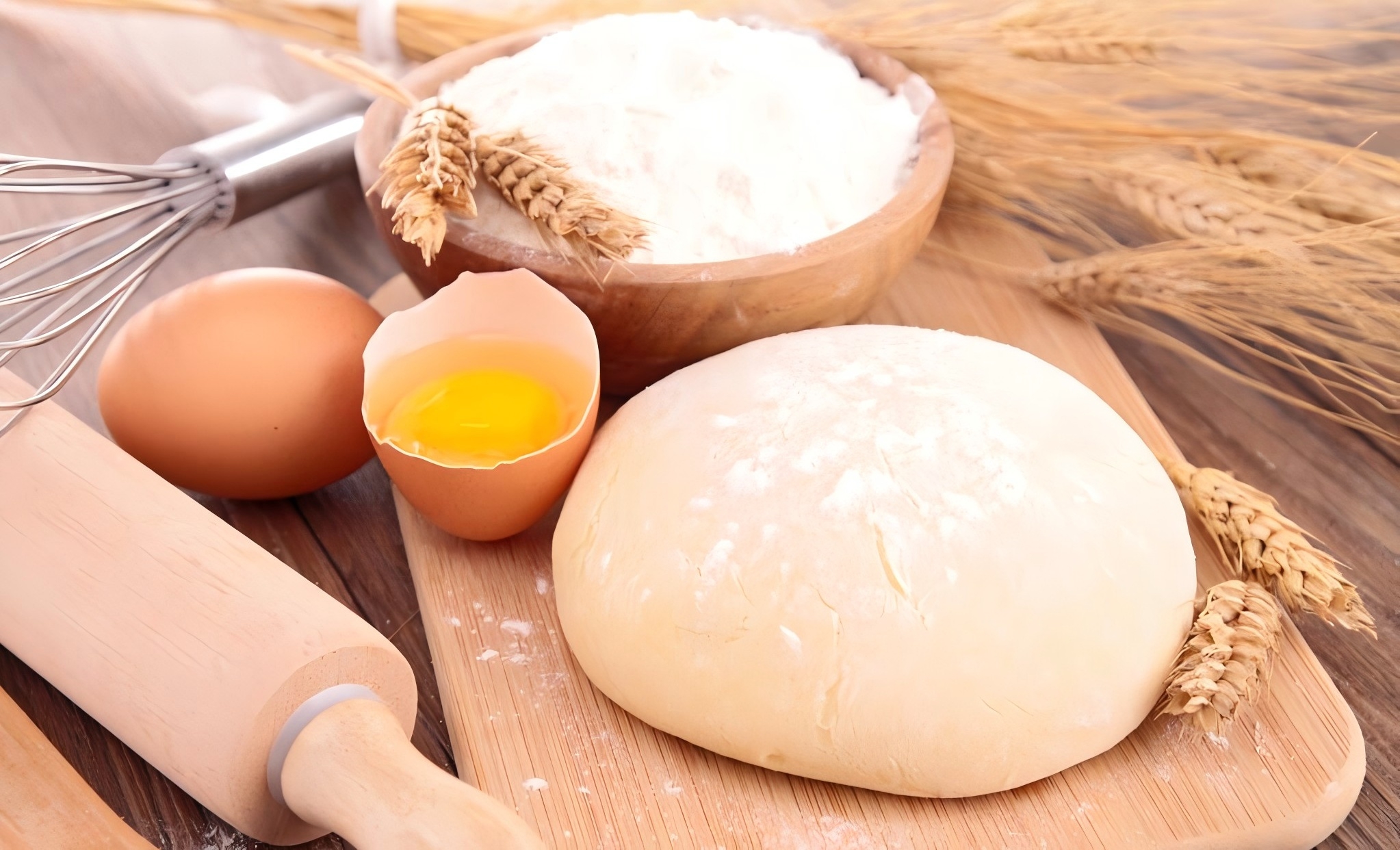
- Weakly alkaline baking soda (sodium bicarbonate)
- Acidic powders (like cream of tartar or alum)
- Fillers such as cornstarch Together, these ingredients make a great leavening agent.
People prize baking powder, also known as leavening powder or fermentation powder, for its unique leavening effects. It comes in sweet and edible types. It acts quickly as a leavening agent, especially for fast fermentation in grain products. It plays a crucial role in making cakes, steamed buns, bread, pastries, and more.
When baking powder meets water, its acidic and alkaline parts dissolve and react. This reaction releases carbon dioxide (CO₂) gas. During baking, the heat releases additional gas, causing the product to expand and achieve a light, fluffy texture.
Baking powder can also be categorized by reaction speed:
Although baking powder contains baking soda, someone carefully balances its pH with acidic agents, making it neutral. Therefore, you should not substitute it with plain baking soda. Proper acid-alkali balance is essential for optimal leavening.

When the acid in baking powder reacts with sodium bicarbonate, CO₂ bubbles form, providing volume but sometimes lacking softness. The acid also interacts with proteins, improving texture. Cornstarch acts as a stabilizer, preventing premature reactions while adjusting texture and expansion.
A quick-reacting formula that releases CO₂ upon mixing.
Typical composition:
Reaction:
Potassium bitartrate + Sodium bicarbonate → CO₂ + Potassium sodium tartrate + Water
(KHC₄H₄O₆ + NaHCO₃ → CO₂ + KNaC₄H₄O₆ + H₂O)
Tartaric acid reacts similarly but is rarely used alone:
*(H₂C₄H₄O₆ + 2NaHCO₃ → Na₂C₄H₄O₆ + 2CO₂ + 2H₂O)*
An early phosphate-based formula uses monocalcium phosphate (MCP).
Reaction:
*3Ca(H₂PO₄)₂ + 8NaHCO₃ → Ca₃(PO₄)₂ + 4Na₂HPO₄ + 8CO₂ + 8H₂O*
MCP reacts quickly at room temperature but may cause spotting on baked surfaces.
A delayed-reaction formula often paired with calcium lactate.
Reaction: Produces sodium pyrophosphate and disodium phosphate.
Note: Excess sodium pyrophosphate can leave a bitter aftertaste, but calcium compounds mitigate this.
Mix 2.5g baking powder with 45ml warm water. Fresh powder will bubble vigorously; if it doesn't react, it has expired. Replace every 3 months for best results.
Potassium alum, used in fried dough and noodles, may pose health risks (osteoporosis, anemia, neurotoxicity) if overconsumed. Experts advise moderation.
(Further details to be expanded.)
Name: Jack
Mobile:0086 13867199735
Tel:0086 571 22661887
Whatsapp:8613867199735
Email:info@hz-great.com
Add:Nanyang Development Area, Xiaoshan Dist, Hangzhou City, Zhejiang Province, China